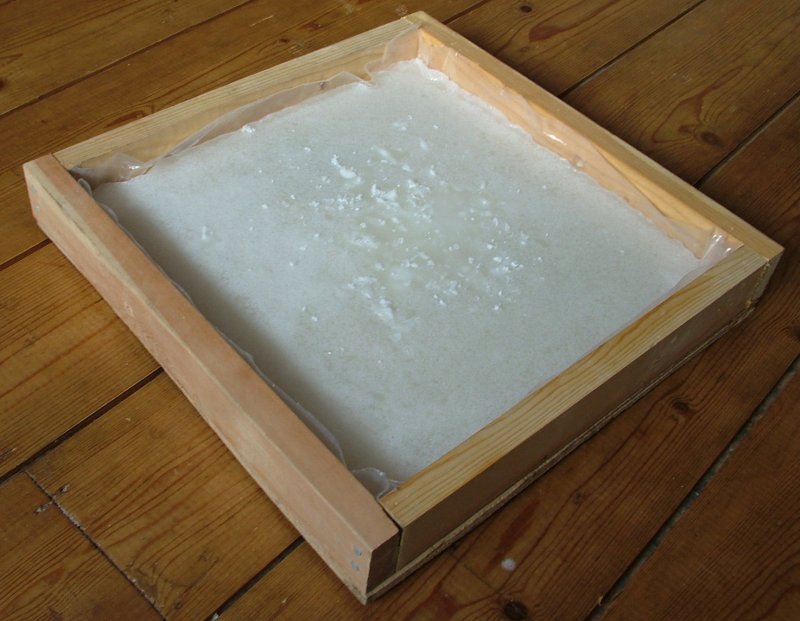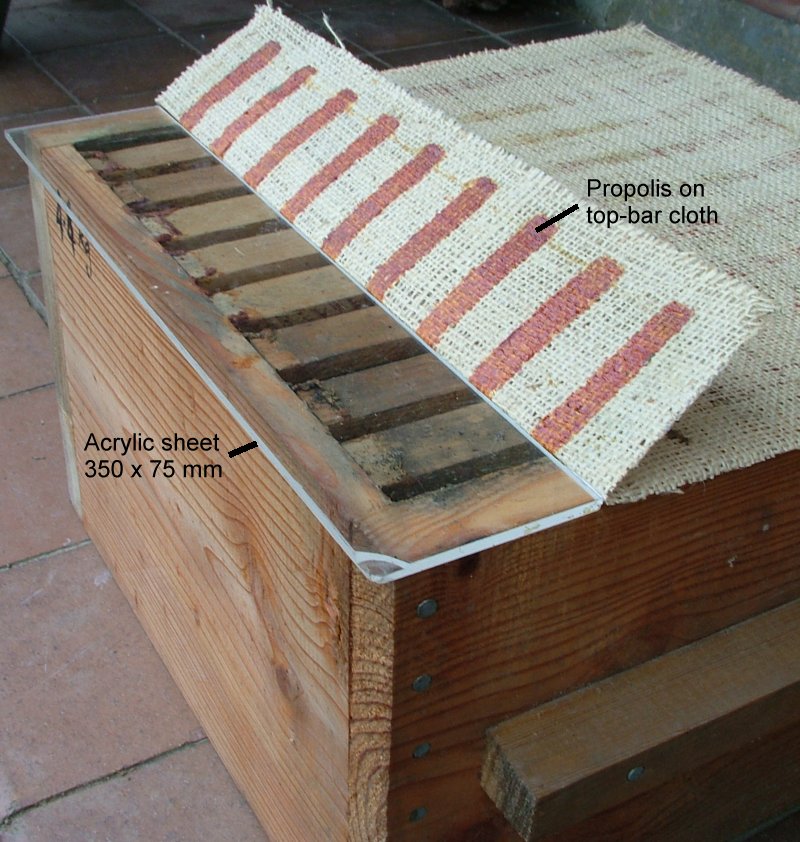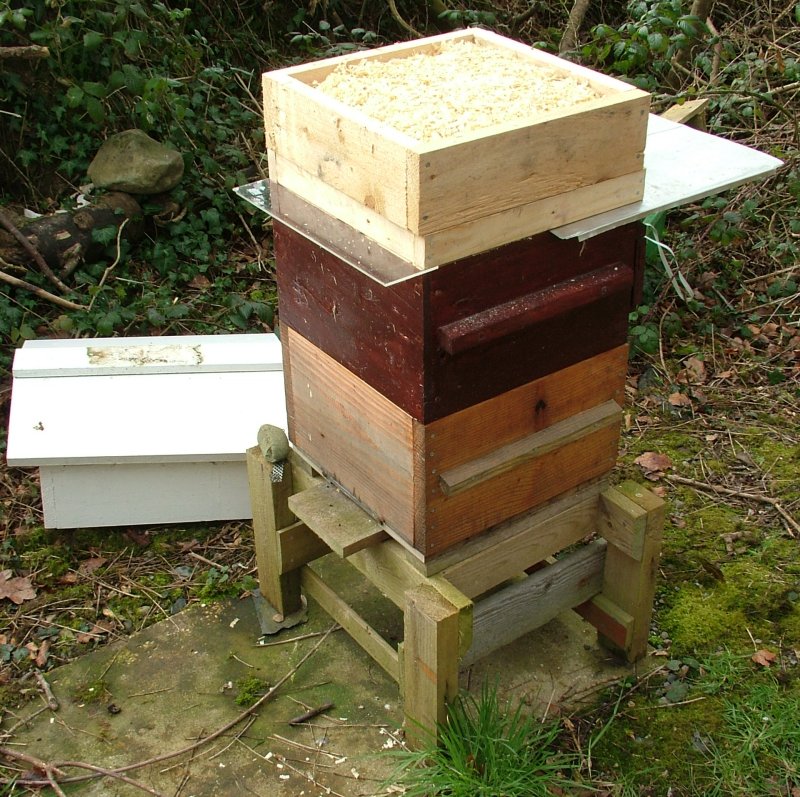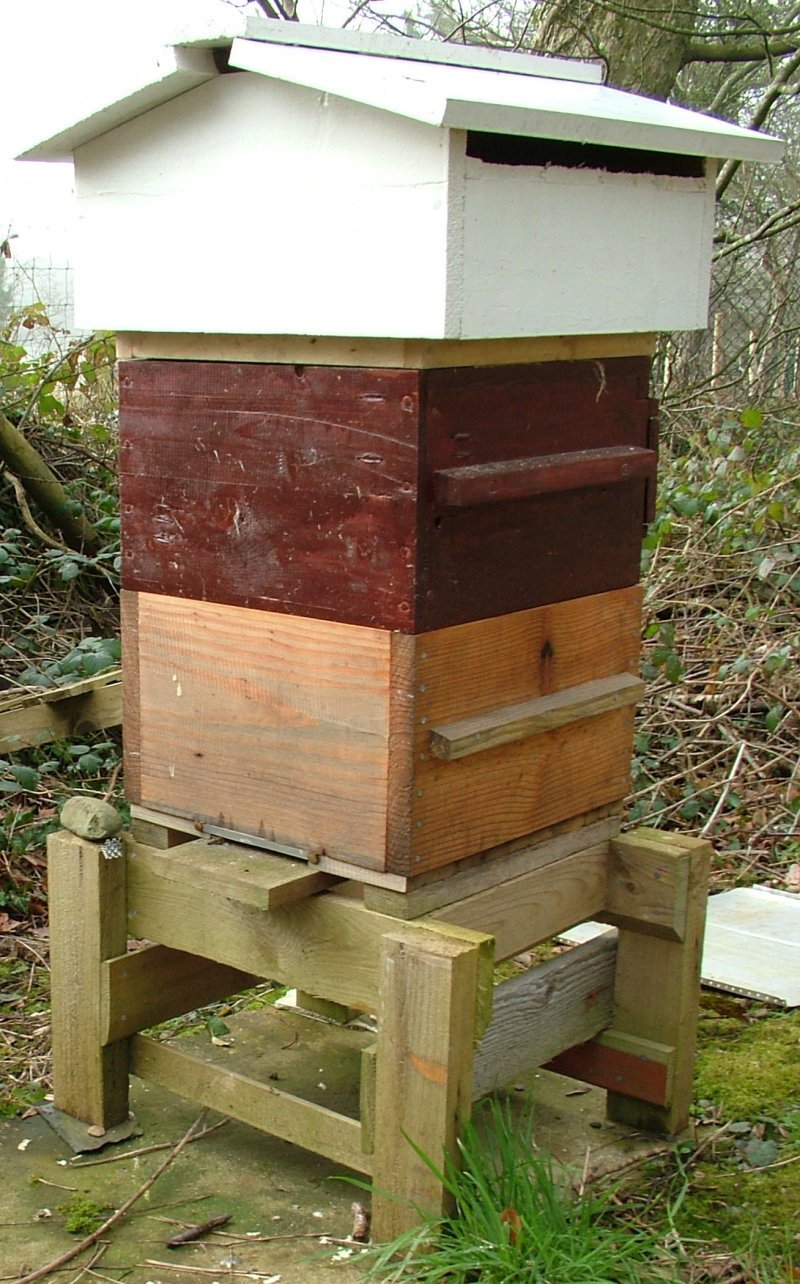
Putting candy on Warré hives
Occasionally it is necessary to rescue a colony in danger of starvation, perhaps due to a poor summer or an overly long and harsh winter. If no honey is available from the same apiary, then sugar is the only option. If the colony is fed sugar syrup, there is a risk of it storing sugar in comb that will be harvested later in the season. But if candy is fed, this will not happen.
I make 2 kg sugar into candy by boiling it with 400 ml water while stirring. A cooking thermometer is placed in the solution. Eventually all the sugar dissolves and the temperature rises to 116 degrees centigrade (soft ball). The solution is allowed to cool while stirring, until it shows signs of turbidity. This can be accelerated by putting the pan in cold water. The solution is then poured into a mould placed at the ready.
For a Warré I use a 44 mm high eke comprising a simple wooden frame (see below). This depth will hold 4 kg sugar. Before pouring in the sugar solution, the eke is set on a board and lined with food grade polyethylene or polypropylene sheet cut from a plastic bag.
Once the candy is set and sufficiently cool it can be put on the hive that is to be fed.

The candy can be placed on the hive without the use of smoke and without letting the heat out of the hive. After removing the roof and quilt, slowly peel back the top-bar cloth while sliding a piece of acrylic sheet (350 x 75 mm) against it in the manner illustrated below. This gives an opportunity to judge the size of the bee cluster. The cloth is peeled back only about 75 mm. This will give plenty of access for the cluster to the candy.

Invert the candy in its eke onto a thin sheet of metal. A baking sheet would suffice. The exposed surface of the candy is now facing downwards. Remove the board used when pouring the candy into its mould. Place the eke containing candy supported by the metal sheet on the hive and gently remove the metal and acrylic sheets as illustrated in the picture below.

When the hive is reassembled, the eke-hive junction is potentially exposed to driven rain and the small gap caused by the top-bar cloth risks letting heat out of the hive. I tape up this junction with sticky tape. Another solution would be to make a rubber band out of old cycle inner tube or other elastic, waterproof material, so that it just grips the hive and covers the junction.

To David Heaf's beekeeping index
Towards Sustainable Beekeeping